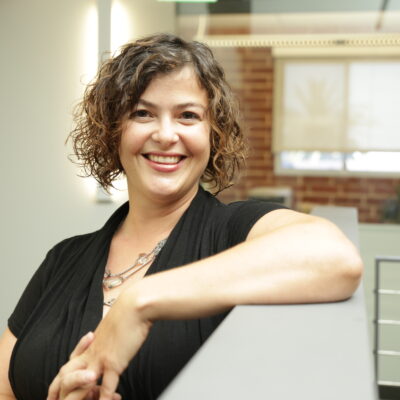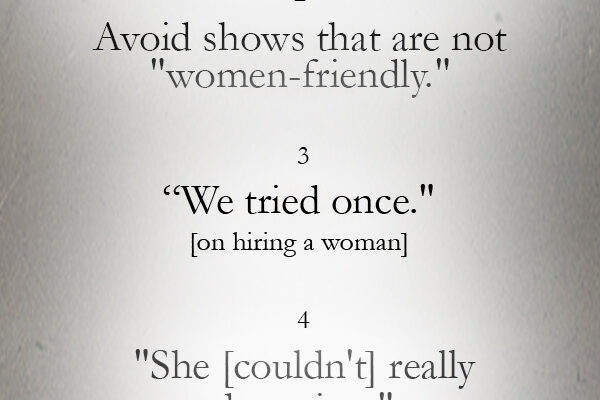The number of women given the opportunity to direct and tell their stories through film is dismally small, yet last year, Hollywood found a way to make that number even smaller, according to a new study by San Diego State University.
This comes after nearly two years of intense media attention and public discourse about bias against women in Hollywood, particularly against women directors; after the ACLU discovered likely illegal discrimination in the industry and requested that civil rights enforcement agencies act; after the federal government launched – and continues – a large investigation into systemic discrimination against women directors throughout the industry; and as women (and some men) in Hollywood persistently and increasingly speak out.
At best, studios and production companies are demonstrating their lack of true effort and commitment to solving what is an incontrovertible civil rights problem: the vast exclusion of women’s voices and the denial of employment opportunity to women in one of the nation’s most powerful and lucrative industries. At worst, they are continuing to let overt and implicit bias dominate hiring decisions while alienating female consumers.
The study by Dr. Martha Lauzen revealed that women directed only 7 percent of 2016’s top 250 domestic grossing films, a decrease of 2 percent from 2015 and 1998 numbers. Of the top-grossing 100 films – by the largest budget studio films – women directed only 4 percent last year. When you go broader to look at the top 500 films – a bigger pool – women still directed only 11 percent. Pathetic. This is a far cry from the percentage of skilled, talented and experienced women directors out there and miles away from women’s proportion in the population. Lauzen also found that 35 percent of these films employed just one or no women in key roles such as producer, writer, editor or cinematographer.
The lack of women directors last year also affected the number of women hired in other behind-the-camera positions. Lauzen’s study found that feature films with at least one woman director employed higher percentages of female writers, editors, cinematographers and composers than films with only male directors.
What’s sad is how much these numbers feel like old news year in and year out. But we must fight against the fatigue and not get complacent. This problem is not solving itself, and the steps taken so far within the industry to address it are too small and ineffective.
This is a critical moment for Hollywood to step up and make systemic and seismic changes that will actually move the needle on the number of women directors given an opportunity to work and use their voice to tell important stories. The industry should be working hard to avoid potential charges and legal action by the Equal Employment Opportunity Commission (EEOC).
But more importantly, Hollywood should be embracing its key role in changing, rather than reinforcing, the misogyny and bias that are baked into our systems and our culture. Film is a powerful shaper of how we see women and how women see themselves. Norms about women’s roles and attitudes towards women won’t change without diversifying the stories we are told and the storytellers who tell them.
- Federal civil rights agencies need to hold studios accountable and file Commissioners’ charges against those engaged in unlawful discrimination.
- Hollywood hirers need to make a real commitment to increase the number of women hired and think big, not small. They need to prioritize and set real targets to increase the number of women they hire and make it happen. History has proven that the most effective way to combat employment discrimination is for employers to acknowledge the problem and make a real, top-down commitment to concrete action and accountability. The women are there and ready to work. The Director List is a good place to start.
- Women denied equal opportunity and their allies need to keep speaking out loudly and applying external pressure and accountability from all fronts. The most powerful tool women in Hollywood have is their voice. The more who speak out, the more safety and protection they have from retaliation. Speak out in whatever ways you can. Women directors, who have recent experiences of discrimination, consider reaching out to the ACLU or sharing your story confidentially with the EEOC. You can do that here.
- Consumers of film need to use their strongest weapon of all: their purchasing power. Consumers should spend their money to see films directed, written and created by women. You can stay up-to-date through amazingly informative sources like Women and Hollywood, which publishes a weekly newsletter of content you can go see, or by following organizations like Women in Film (@WomeninFilm).
To the studios, who continue to fail to make a real effort to meet their inclusion crisis, the EEOC is watching and so are we.
Melissa Goodman is director of the LGBTQ, Gender and Reproductive Justice Project at the ACLU of Southern California.


